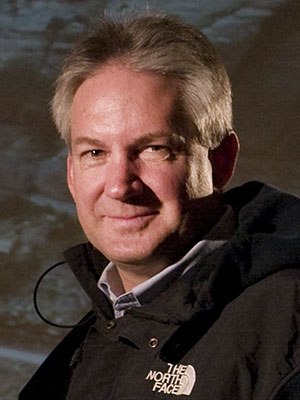Research group specializes in Clastic Sedimentology, Sequence Stratigraphy, Clastic Petrology, Glacial, Fluvial, and Tidal Deposits; Antarctic and Gondwana Geology. Current research projects focus on understanding environmental changes that occurred during critical intervals in Earth History, including the late Paleozoic Ice Age and the ensuing Permian-Triassic greenhouse and the transition from the Cretaceous to the Tertiary prior to and following the extinction event.
Dr. John L. Isbell, Professor
Specializes in Clastic Sedimentology, Sequence Stratigraphy, Clastic Petrology, Glacial, Fluvial, and Tidal Deposits; Antarctic and Gondwana Geology.
 John Isbell
John Isbell
Research: Dr. Isbell is a clastic sedimentologist and sequence stratigrapher who works with glacial, glaciomarine, fluvial, deltaic, and shallow marine sediment and sedimentary rocks deposited in foreland, rift, piggyback, and cratonic basins. He currently works in Antarctica, Argentina, Australia, South Africa, the Falkland Islands, the western United States, the Appalachian Mountains, and in Wisconsin. His work focuses on understanding environmental changes that occurred during critical intervals in Earth History. These include (1) the late Paleozoic Ice Age (LPIA) and the ensuing Permian-Triassic greenhouse (359–199 million years ago) and (2) the transition from the Cretaceous to the Tertiary prior to and following the extinction event (145–55 million years ago).
The LPIA represents the last complete transition from an icehouse to a greenhouse Earth. Both the LPIA and the current Cenozoic Ice Age share several important features:
- both occurred during times of low atmospheric CO2,
- both ice ages were bi-polar,
- both were/are represented by long duration glaciation, and
- both occurred during times when complex ecosystems characterized Earth.
The LPIA is an important ancient analog for understanding future environmental changes. The transition between the Cretaceous and Tertiary (Paleogene) is another critical interval in Earth history that Dr. Isbell studies. During the Cretaceous, the ancestral Rocky Mountains were drained by numerous river systems that flowed eastward across an extensive alluvial plain before emptying into a vast shallow sea. A bolide impact, which ended the reign of the Dinosaurs, forever changed this landscape.
Dr. Isbell integrates graduate and undergraduate students into his research both in the field and by studying physical sedimentary processes using the department’s flume research facility.
Dr. Mark T. Harris, Professor
 Mark Harris
Mark Harris
Specializes in carbonate sedimentology, sequence stratigraphy, carbonate petrology, paleonotology, and history of geology.
Research: My research projects generally focus on the sedimentology and sequence stratigraphy of carbonate rocks. My current project is a collaborative study with Peter Sheehan (Milwaukee Public Museum) of Upper Ordovician-Lower Silurian facies, sequences and communities of the Great Basin and Estonia. NSF is supporting our work and our Estonian colleagues are Leo Ainsaar (Tartu University), Linda Hints (Institute of Geology, Tallinn), Peep Männik (Institute of Geology, Tallinn), Jaak Nõlvak (Institute of Geology, Tallinn), and Madis Rubel (Tartu University).
Peter, Tory Schultz (MS student), Jim Awe (field assistant), and I traveled to Estonia last summer to work on the project. We had a few scattered days to enjoy the glories of Tallinn, but largely we described lots of cores. Peter and I had worked on a few cores the prior summer so we knew the basic stratigraphy (complete with regional Baltic stage and series names). The data collected on this trip will allow us to expand our stratigraphic framework across the rest of the study area. Tory has nearly completed his interpretation of the Upper Ordovician strata, and the general patterns of the Lower Silurian sequences is rather clear. We are currently trying to figure out some of the biostratigraphic details, and Peter is starting to work up the faunas.
Current Graduate Research
Appalachian Basin (KY, WV, OH)
Gonwana Geology (Antarctica, Australia, Argentina, South Africa)
Cretaceous & Tertiary Basins (MT, ND, WY)
Modern fluvial environments (Wisconsin River)
Ordovician-Silurian facies, sequences and paleoenvironments (Wisconsin, Nevada/Utah, Estonia)
Glacial Processes (Canada and Switzerland)
Quaternary History (Wisconsin)
Any interested MS or PhD students should feel free to contact any of the faculty members above.